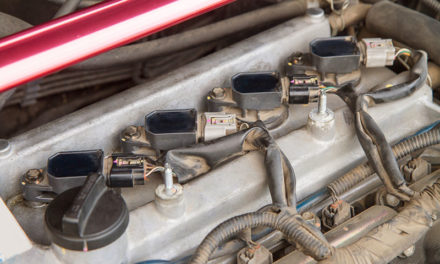The crank sensor in your vehicle will not last forever. However, extensive use across hundreds of thousands of miles is not the sole reason for crank sensor malfunction. There are all sorts of different reasons why these sensors eventually go bad. Below, we delve into the top causes of crank sensor malfunction and explain why this essential vehicle component is so important.
The Basics of Crank Sensors
If your vehicle’s crank sensor goes bad, it won’t properly relay essential information to the internal computer. This fault in communication will inevitably lead to engine issues. This is precisely why you should replace your compromised crank sensor as quickly as possible. Delay the sensor’s replacement and you just might end up with several other engine problems that cost a bundle of money to repair. In short, your vehicle’s crankshaft sensor is an electronic device within the engine that registers the speed of the crankshaft’s spin, communicating the crankshaft position to the engine control unit (ECU for short) to regulate fuel injection, engine timing, and ignition.
Clues That Your Vehicle’s Crank Sensor Might Have Malfunctioned
If your check engine dashboard light is illuminated, the computer might have detected that the crank sensor is beginning to go bad or has already done so. However, the check engine light could indicate other issues that are occurring in your engine. The best approach is to have the engine scanned to identify which trouble code is triggering the warning light illumination.
Another common sign of a malfunctioning crank sensor is vehicle stalling. Improper crank sensor positioning has the potential to cut off the signal as the engine operates, potentially resulting in a stall. Furthermore, if your vehicle’s engine struggles to start, the crank sensor’s position might be the issue. Even intermittent starting is a clue of a bad crank sensor.
The Wheel and Pin Might be Compromised
A vehicle’s crankshaft position sensor, also referred to as the CKP, gauges the magnetic pulses generated by a collection of pins or toothed wheel. If the pins or wheel are compromised, the pulse pattern is disrupted. It is possible the damaged wheel and pin will send inaccurate impressions of the crank speed, confusing and possibly even damaging the crank sensor.
A Problem With the Wiring Harness can Compromise the Crank Sensor
Loose wires, debris and/or oil can lead to incorrect voltage or problems with the return circuit that spur wiring harness issues. The disruption to the voltage or wiring wear has the potential to compromise the crank sensor.
An Abundance of Heat
An engine that is overly-hot has the potential to end up with crank sensor damage. Furthermore, excessive heat within the engine can even lead to a melting of the unit’s plastic casing, causing the crank sensor to go bad.
Damage to the Timing Belt
If the timing belt endures damage amidst a collision or if the belt snaps due to general wear, it is possible the belt will wrap around the crank sensor, damaging sensors and parts. A snapped timing belt might strike the crank sensor, causing considerable damage.
Problems With the Circuitry
If there are issues with the vehicle’s internal wiring, the crank sensor has the potential to go bad. From damaged wires to worn out wires and even loose wires, even the slightest issue has the potential to hinder crank sensor functionality. Furthermore, faulty voltage can also compromise the crank sensor. The bottom line is the crank sensor is dependent on wiring to transmit signals in the proper manner.


![[Vehicle Fitment]: Compatible with Toyota Avalon 2000-2004 3.0L, Camry 2002-2006 3.0L/2004-2006 3.3L, Highlander 2001-2003 3.0L/2004-2010 3.3L, Sienna 2004-2006 3.3L/2000-2003 3.0L, Solara 2004-2008 3.3L--Left and Right; Compatible with Lexus ES300 1...](https://m.media-amazon.com/images/I/41FJOmFvCpL._SL100_.jpg)















Who can refurbish the crankshaft position sensor of my 1993 Camaro 3.4L?
GM discontinued part #24503954.
Clarence
I pulled wires out of the plug connector of crank sensor on 94 Ford ranger now have no idea which wires go where it’s 4 wires and they don’t match up on other side of connection does that make sen